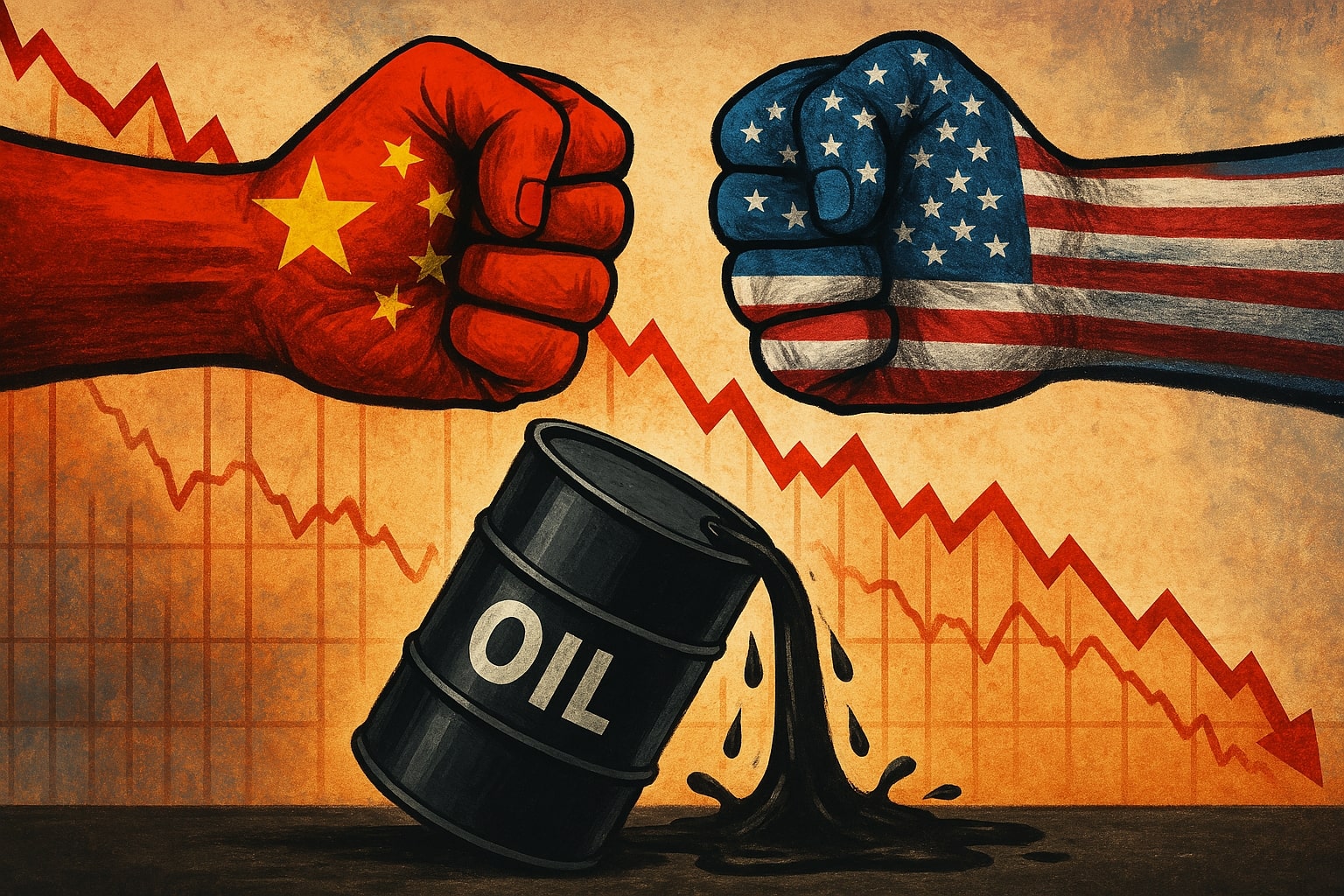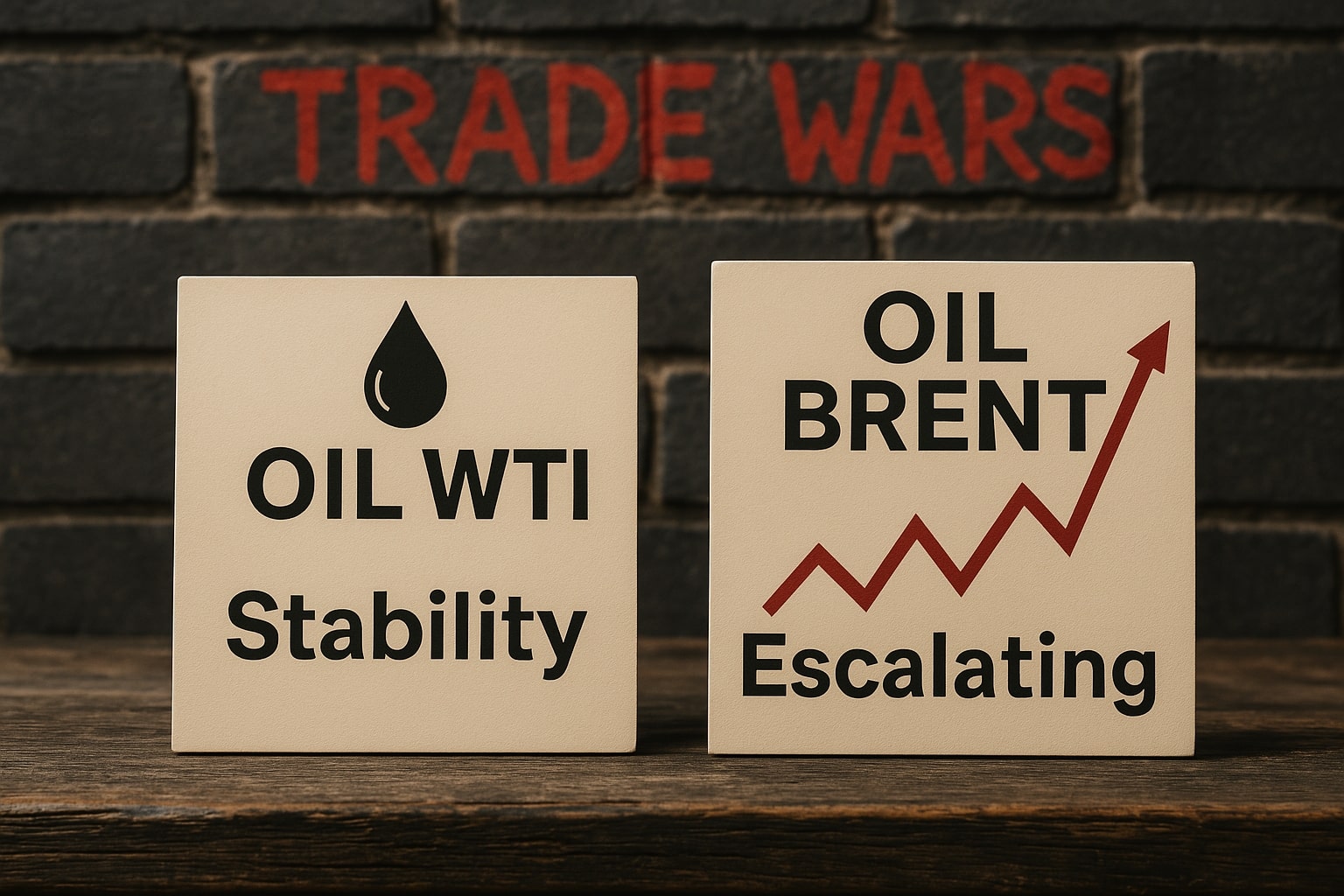
Oil Prices Climb Amid Fed’s Rate Cut and Global Market Tensions
Geopolitical risks and sluggish demand from China challenge oil’s short-term gains, while analysts predict volatility ahead | That's TradingNEWS
OIL Market Reaction to Federal Reserve's Interest Rate Cut
The recent interest rate cut of 0.5% by the Federal Reserve on Wednesday had an immediate impact on the oil market, with prices showing a brief rally before losing momentum. This move, signaling economic headwinds, raised concerns about the state of the U.S. economy and its demand for oil. Despite this initial push, global factors such as Chinese demand, geopolitical risks, and production trends are playing crucial roles in shaping oil prices.
Impact of Fed's Interest Rate Cut on Crude Oil Prices
Following the Fed’s announcement, Brent crude futures rose by 1.13% to $74.48 per barrel, while WTI crude prices increased by 1.24% to $70.75 per barrel. The interest rate cut, the first in more than four years, typically boosts economic activity, increasing energy demand. However, the market also perceived the rate cut as a reflection of weak economic conditions, which contributed to a more cautious outlook.
Geopolitical Risks and Supply Disruptions
The geopolitical landscape in the Middle East, particularly escalating tensions with Hezbollah and Israeli security operations, is creating volatility in oil markets. With major oil reserves located in this region, any disruption can lead to significant price increases. Analysts are closely monitoring developments, as any escalation could lead to a supply shock, pushing prices higher. These uncertainties, combined with cautious trading behavior, have kept markets on edge.
Chinese Demand: A Key Factor for Oil Prices
One of the dominant factors weighing on oil prices is weak demand from China, the world’s largest crude importer. Refinery output in China has slowed for five consecutive months, reflecting lower industrial output and retail sales. Citi analysts predict a potential rebound in Chinese demand, estimating a 300,000 bpd (barrels per day) increase in the final quarter of 2024. This uptick, if realized, could help stabilize and support prices, particularly in light of the broader economic challenges.
Brent Crude Price Recovery and Technical Analysis
Brent crude oil prices are recovering from their early September low of $68.53, marking the most bearish sentiment in over a decade. Immediate upside pressure remains in play as long as support levels at $71.18 and $70.51 hold. A technical breach of these levels could signal a return to the bearish track, with potential downside targets at $64.52. On the upside, analysts expect resistance at $73.48 to cap short-term gains unless supported by stronger fundamental drivers.
Supply and Inventory Changes
The U.S. crude oil inventories decreased by around 1.6 million barrels, dropping to the lowest levels in nearly a year at 417.5 million barrels. In contrast, gasoline inventories rose by 100,000 barrels to 221.6 million barrels, indicating a slight shift in market dynamics. Reduced supply combined with increased geopolitical tensions is supporting a gradual price rise, yet the underlying demand, particularly from key regions like China, remains a critical factor.
Forecast for the Coming Months
Analysts at Citi predict a counter-seasonal oil market deficit of around 0.4 million bpd, which could support Brent crude prices in the $70 to $75 range through the final quarter of 2024. However, they anticipate renewed price weakness in 2025, potentially bringing Brent prices back to $60 per barrel, as global oil balances are expected to deteriorate.
Long-Term Outlook and Market Sentiment
While the Fed’s rate cuts provided short-term relief for oil prices, long-term challenges persist. The market continues to balance concerns over weak demand from China, ongoing geopolitical risks, and the potential for a broader economic slowdown. On the bullish side, any increase in refinery output or significant supply disruptions could push prices higher. However, bearish sentiment tied to global economic uncertainty and weak industrial activity remains a strong counterweight.
Price Action and Future Trends
Current trading indicates strong support around $69.50, with resistance at $72.50 for WTI crude oil. Maintaining above these levels is crucial for any continued bullish correction. If prices fall below these support levels, it could signal a return to the bearish trend that dominated earlier in 2024. For now, the trend forecast remains cautiously bullish, contingent on global demand recovery, particularly from China, and the absence of major supply shocks.
Conclusion
While oil prices have shown resilience following the Fed’s rate cut, the market remains volatile with global demand uncertainties, geopolitical risks, and supply concerns playing pivotal roles. With analysts expecting a short-term rebound but potential weakness in 2025, the oil market faces a complex outlook. Traders and investors will need to navigate these headwinds carefully as the interplay between economic policies and market fundamentals unfolds.
















